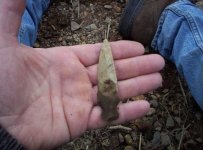Smithbrown
Bronze Member
- May 22, 2006
- 1,004
- 841
Update on 6[SUP]th[/SUP] century BC shipwreck off Sicily with helmets andingots of orichalcum
http://www.seeker.com/fabled-atlantis-metal-ingots-continue-to-emerge-from-the-seas-of-sicil-2290338231.html
http://www.seeker.com/fabled-atlantis-metal-ingots-continue-to-emerge-from-the-seas-of-sicil-2290338231.html






